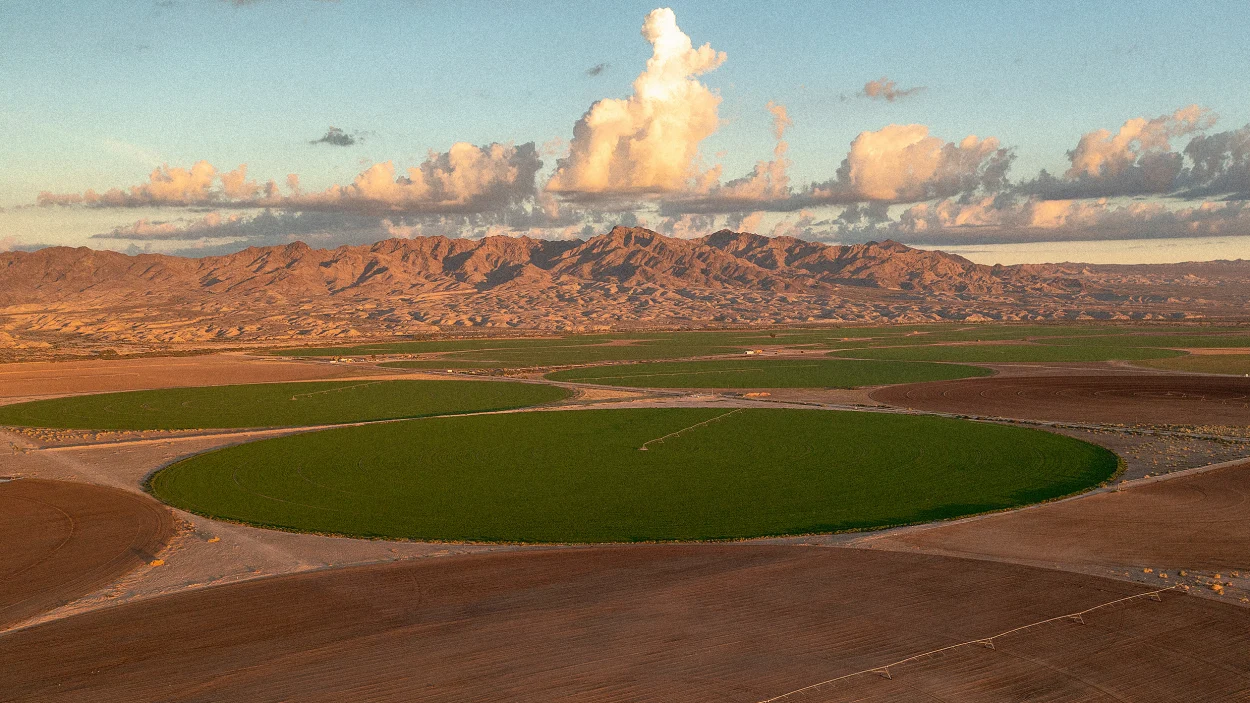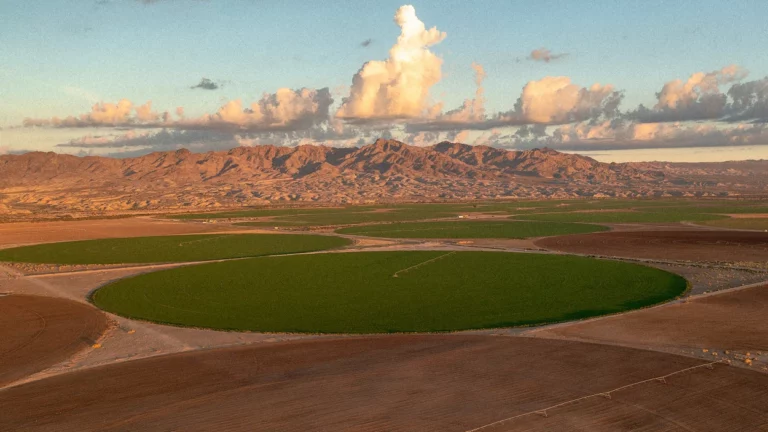Photo: Farmland is seen on the California side of the Colorado River on September 23, 2022 near Needles, California. [Photo: David McNew/Getty Images]
[Ed.: We have questions about cloud seeding, and not only about any downstream/downwind consequences. There are side effects, at least some of which are mentioned in the article.]
It’s not a comprehensive solution, but could help address drought in the Colorado River Basin.
This coming winter, residents in the American West may glance up to the sky and see planes shooting tiny particles at clouds. That might sound like something from a sci-fi flick—but it’s a legitimate effort to create more water during a megadrought that’s now in its 23rd consecutive year.
The technology, cloud seeding, is a process of stimulating clouds to produce more precipitation, and has been around for more than 80 years. It’s been used in different ways through history, but there’s growing research and interest—and an inflow of federal funding—as Western states struggle to deal with water shortages. Though far from the only solution, it’s viewed as one tool that could help reduce dangerous deficits.
When cool droplets accumulate in clouds, many are too small and light to descend downwards, and simply hover in the sky. Cloud seeding is the process of making those droplets bigger so they fall to the ground, by injecting the clouds with a bulking agent, silver iodide. The compound is either burned on the ground and rises up into the clouds—or shot at the clouds from airplanes, which is more effective but costlier. Either way, the idea is to “get more out of those clouds,” says Katja Friedrich, associate chair of the Department of Atmospheric and Oceanic Sciences at the University of Colorado.
“The basic concept of cloud seeding is actually not debatable, because we know that it works,” Friedrich says. The technique has been around since the 1940s, when meteorologist Vincent Schaefer took the first flight to release a seeding agent—dry ice—into clouds. “Ice would be a perfect feeder, but it’s really difficult to get the ice into the aircraft,” Friedrich says. Silver iodide acts as a more manageable option that has a suitable crystalline structure.
Today, the concept is having something of a renaissance, as the West searches for solutions to its water crisis. It’s in the middle of what may be the most severe drought since 800 AD; groundwater is drying up, and there’s a fight over the critical supply from the Colorado River, largely between California and the six smaller states in the river basin. (The Biden administration recently recommended resources be split evenly, despite a “seniority” rule that California uses to justify pushing to the front of the line.)
Cloud seeding has been used in different ways, including to create rainfall in the UAE and Texas, and to shrink hail in Canada. But in the West, seeding focuses on orographic—wintertime—clouds in mountainous areas, to increase snowfall between November and March. The idea is for cloud seeding to help increase […]
Full article: www.fastcompany.com



